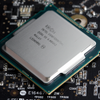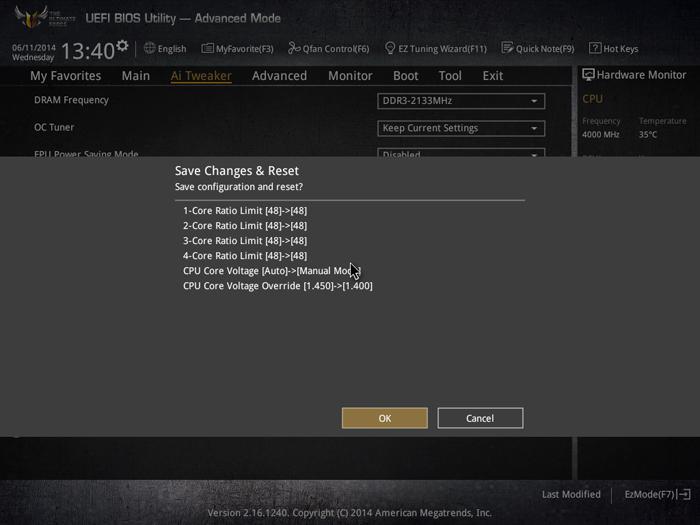Overclocking With Devils Canyon Core i7-4790K
Overclocking The Core i7-4790K
If you are planning to do some overclocking with a Haswell based processor, you are so much better off with a K model processor. The downside, Intel charges you extra cash for it these days. Why K versions you ask? Well, the default non-K processors will be much harder to overclock. With Nehalem/Clarkdale (last generation Core i3/i5/i7) you pretty much take your base clock of 133 MHz and apply say a default multiplier of 25, that would be your 3.33 GHz processor. That base clock was capable of going so much higher, 150, 186 and when tweaked right, even over 200 MHz. So if you were able to apply a fictive 175 MHz on your base clock, you could multiply it with the limited 25 multiplier. That would get you 4375 MHz. The new technology however has an embedded GPU / video processor merged into the very same processor die running over the same bus sharing the same L3 cache memory, things get increasingly complicated in matters of tweaking. But please do get a 30 USD more expensive K version and in the BIOS you'll have much better tweaking options. With a proper motherboard you can now set a multiplier per core.
Devils Canyon should offer a better thermal package, so that combined with more power capacitors and that unlocked we started overclocking.
The (generic) procedure is as follows:
- Leave baseclock for what it is
- If present, increase the TDP limit of your processor to 200~250 Watts
- With a 4770K change Turbo multiplier to 44 initially and gradually work your way upwards.
- Increase CPU voltage, though setting AUTO might work fine, we think 1.2~1.250V on this motherboard is a sweet spot if you stay under 4500 MHz
- Make sure your processor is properly cooled with enthusiast grade heatpipe cooling or liquid cooling
- Save and Exit BIOS / UEFI
Overclocking with the Z97 on an ASUS motherboard typically is easy. Basically in the BIOS we flick the multiplier towards 48, activated the XMP memory profile (2133 MHz) and we were up and running, but not stable.
See, with a Core i7-4770K we can leave our BIOS voltage settings at auto, weirdly enough Devils Canyon 4790K was harder to overclock compared to the 4770K. We actually needed to pump 1.40 Volts into the CPU to get it stable enough at 4800 MHz. Whatever we tried, we have not been able to pass 4800 MHz as 4900 MHz even with 1.45 Volts crashes. This makes Devils Canyon very power demanding and with high voltages, again comes heat that you will need to battle.
Now the 4800 MHz is at this stage not 100% stable, Prime95 will not run for over 15 minutes without crashing, however at the current settings it's stable enough to run some benchmarks. Later on we'll need to finalize tweaking, We'll probably need another 0.025 / 0.050 Volts. At this stage I decided to move forward as I wanted to pump out this review. At 1.40 Volts the temps under stress are on the high side, but much better opposed to the 4770K alright. The improved thermal package definitely works. Once you will pass 1.45V not even a H110 LCS Corsair cooler will save you as the package temperature (on our sample) increased to 85 Degrees C. 1.30 to 1.40 Volts seems to be do-able with proper liquid cooling though.
You can see that at 4800 MHz we have stable stress temperatures that remain acceptable. Many of you will likely end up with a maximum OC of 4600 maybe 4700 MHz max we think. That is if you are on a LCS kit or heat based cooler.
Overclocking with increased voltages will increase your power consumption though, always keep that in mind. You can easily add another 100 Watts on top of your overall power consumption when the CPU is under heavy load.




